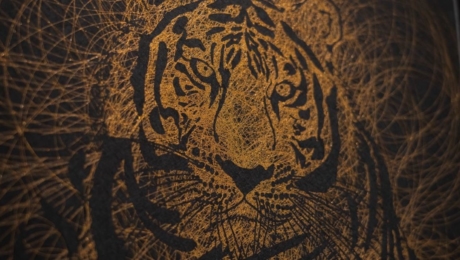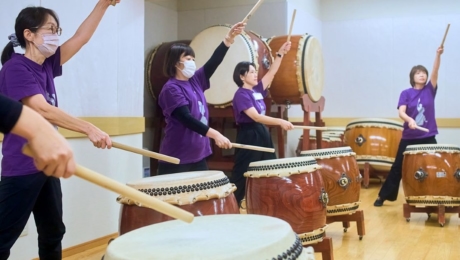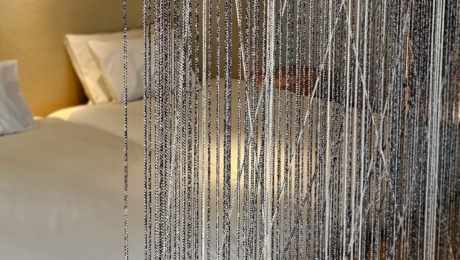

【Edo Tokyo Rethink】Message from Exhibition Director Noritaka Tatehana
2023.03.31
LIFEBased on the concept “old meets new,” the Edo Tokyo Kirari Project was conceived to introduce the timeless appeal of Tokyo both to Japan and to the wider world. This is an appeal embodied by the many venerable shops that have carried on the flame of craftsmanship, culture, and tradition in the city over the centuries, from the Edo period to the modern day. As an offshoot of the project, I have joined the Edo Tokyo Rethink exhibition, as both a contributing artist and exhibition director. In the past, I have held a number of other exhibitions bearing the title “Rethink.” However, I believe this project’s theme, “old meets new,” dovetails particularly well with the notion I have sought to convey with the word “rethink.” In essence, Japan’s traditions and culture have been handed down over the generations, in a seamless, unbroken chain. Rather than merely rehashing these traditions in the modern age, we should rethink our heritage, adding an extra layer of modern meaning and reinterpretation. You could say that all of my work is predicated on the full accretion of Japanese history and culture. In that sense, I see “old meets new” as being synonymous with the act of rethinking. My career has been a constant process of connecting past and present, across myriad collaborations with traditional crafts and performing arts. In order to preserve our traditions for the next 100 years, we must ask what we can do in the present, identifying what should change with the times, and what should remain the same. What modern meaning will we add, now that it is our turn to define tradition? The present exhibition serves to introduce the many charms of Tokyo, while also presenting all of us an opportunity to rethink old and new.
Edo Tokyo Kirari Project Promotion Committee
Edo Tokyo Rethink Exhibition Director
Contemporary Artist Noritaka Tatehana
Special Movie: Edo Tokyo Rethink
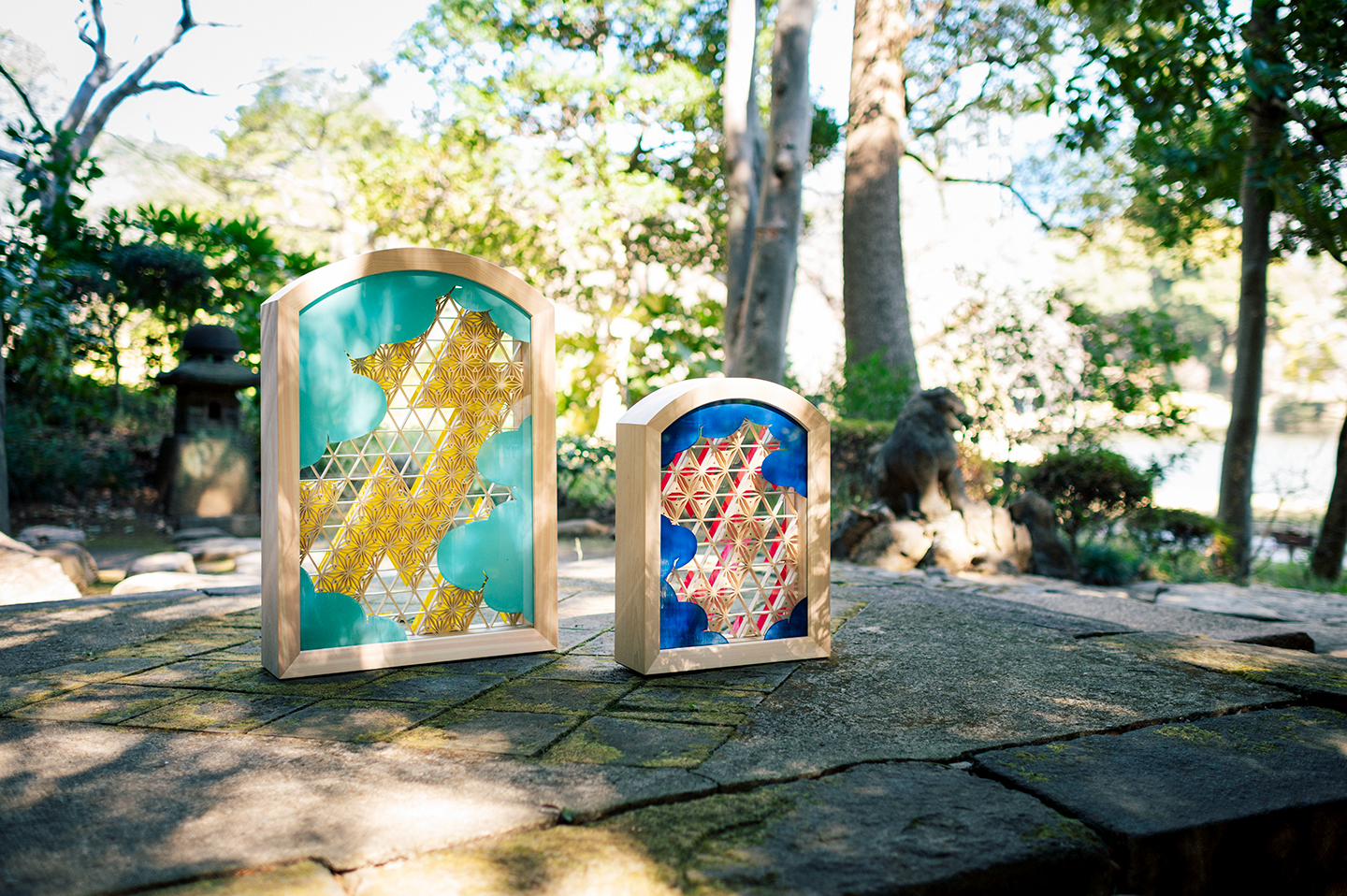
Noritaka Tatehana x Edo Kumiko Tatematsu
In collaboration with Tatematsu, which specializes in using the intricate kumiko handiwork to create various products, the traditional geometric patterns of kumiko handiwork and the thundercloud motif painted by Noritaka Tatehana in acrylic paint were portrayed using the overlapping technique. The two types of patterns used, the hemp leaf and the bellflower tortoise shell, are known as traditional apotropaic symbols. Similarly, the thundercloud drawn by Tatehana symbolizes the spiritual barrier therefore linking the motifs to each other.

Noritaka Tatehana x Edo Moku-hanga Takahashi Kobo
This is a woodblock print of Noritaka Tatehana’s painting from the “Duality Painting Series” in which 2 different designs could be appreciated from the left and the right. The simple structure of hand-folded paper gives a visual effect, expressing the duality that is the concept of this work. By printing sequences of multicolor images chiseled on both sides of 4 woodblocks, vivid and deep color touches appear on the completed print.
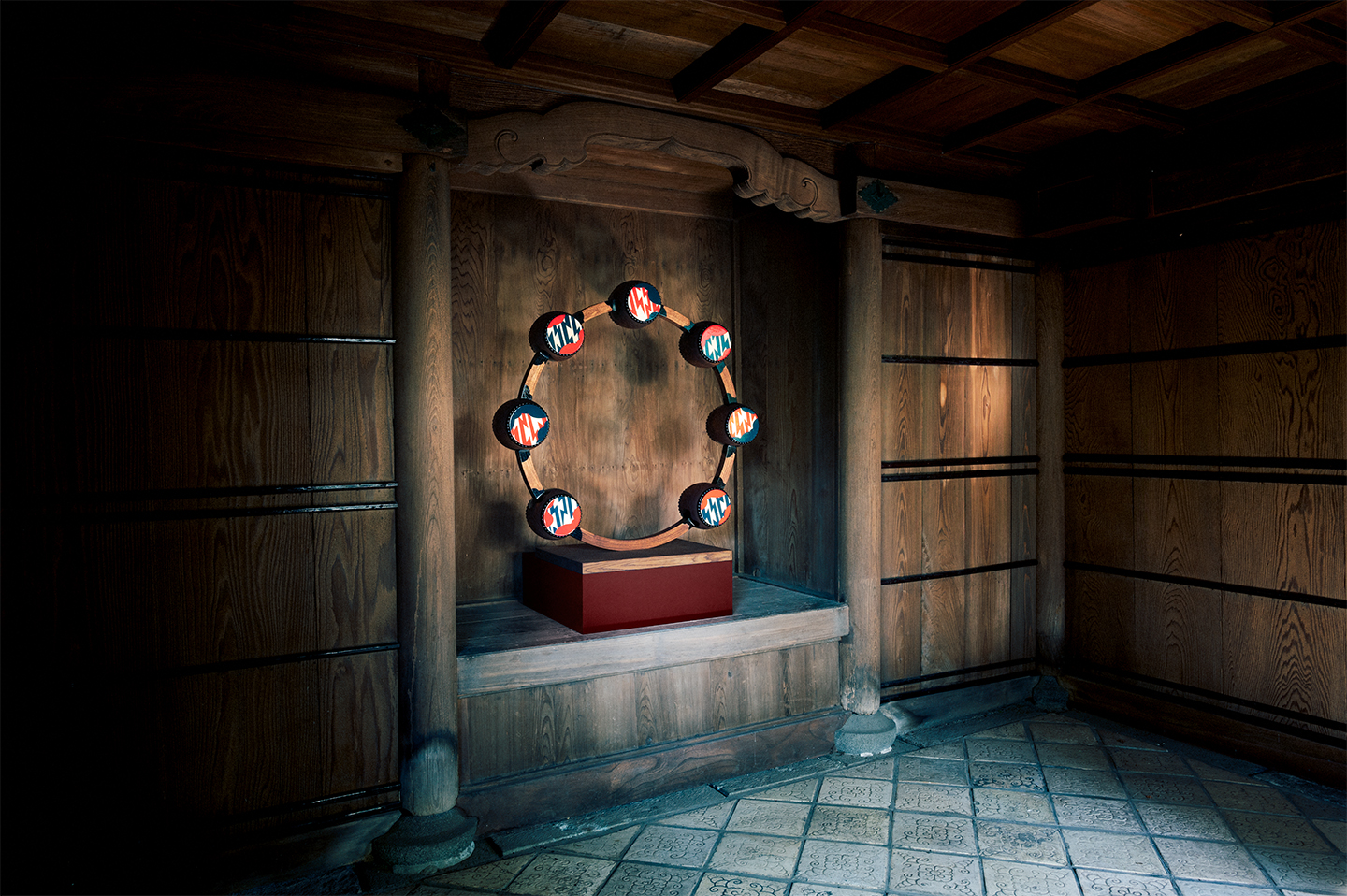
Noritaka Tatehana x Wadaiko Miyamoto Unosuke Shoten
This work portrays the thunderous roar announcing the coming of gods, made by the drums of Raijin, the god of thunder. These drums were created by connecting small 4.5 sun (5.3 inch) drums called gangu daiko or “the toy drums”. After the craftsmen of Miyamoto Unosuke Shoten connected the drums in a circle, they were painted at the atelier of contemporary artist, Noritaka Tatehana. The drums used for this work were those which couldn’t be finished as a product back in the Showa 50s (1975-1984) because they were distorted or cracked during the drying process prior to stretching the skin over the drumheads.

Noritaka Tatehana x Tokyo Kumihimo Ryukobo
“Kakuhimo” or the pure silk square cord, which was created for this work, has different colors on the front and back. This new style of braiding, inspired by the chick sense of beauty of the linings of haori (kimono coat) of the Edo Period, gives seemingly monotone work a rich colorful expression. Furthermore, the collective expression created by the knots precisely placed at a pitch of 60mm adds a three-dimensional texture, consequently acting as an important accent of the work. The decorative knots on the back are a combination of auspicious patterns, completed by a continuous series of two types of knots, the “agemakimusubi” and the “awajimusubi”. The curved line, created by the accent color of the round cord braided in “fujiyotsugumi” style, create an accentuated appearance.

Noritaka Tatehana x Edo Kiriko Hanashyo
The motif of thunderclouds drawn by Noritaka Tatehana is designed and expressed as a delicate kiriko pattern in the collaboration work with Hanashyo, which continues to challenge creating modern patterns as well as traditional patterns. The vigorous contour and the traditional “Nanako” pattern, a fish egg pattern engraved to fill up the outlined area, create a visual contrast. The silhouette of the glassware reflects the image of clouds drawn by Noritaka Tatehana. By integrating the silhouette of the glassware and the kiriko pattern, the thundercloud motif is perfected.

Noritaka Tatehana x Shin Edozome Marukyu Shoten
Noritaka Tatehana drew a motif of thundercloud using the design based on the valuable historical material published by Marukyu Shoten in the 1970s, to complete this work. It was dyed using a traditional stencil dyeing technique called “Chusen”. This technique makes it possible to dye a fabric in various vivid colors simultaneously using a single stencil. “Goro Cho”, which Tatehana chose as his motif, is related to the Japanese dance nagauta, a kind of traditional Japanese music, “Ame no Goro”. The designs related to Japanese dance represent the style which Marukyu Shoten has continued to inherit since long ago.
Artist Profile
Noritaka Tatehana
Born 1985 in Tokyo, graduated from Arts Course Department of Crafts Tokyo University of the Arts. He created the heel-less shoes, inspired by Oiran Takageta (wooden clogs), for his graduation project. The striking shoes went on to gain considerable notoriety when they were enthusiastically adopted by Lady Gaga. Today, Tatehana is a contemporary artist who collaborates extensively with traditional craftsmen and artisans. His work is featured in exhibitions in Japan and throughout the world, with many of his pieces on permanent collection at prestigious institutions such as the Metropolitan Museum of Art in New York and the Victoria and Albert Museum in London.
Photo by GION
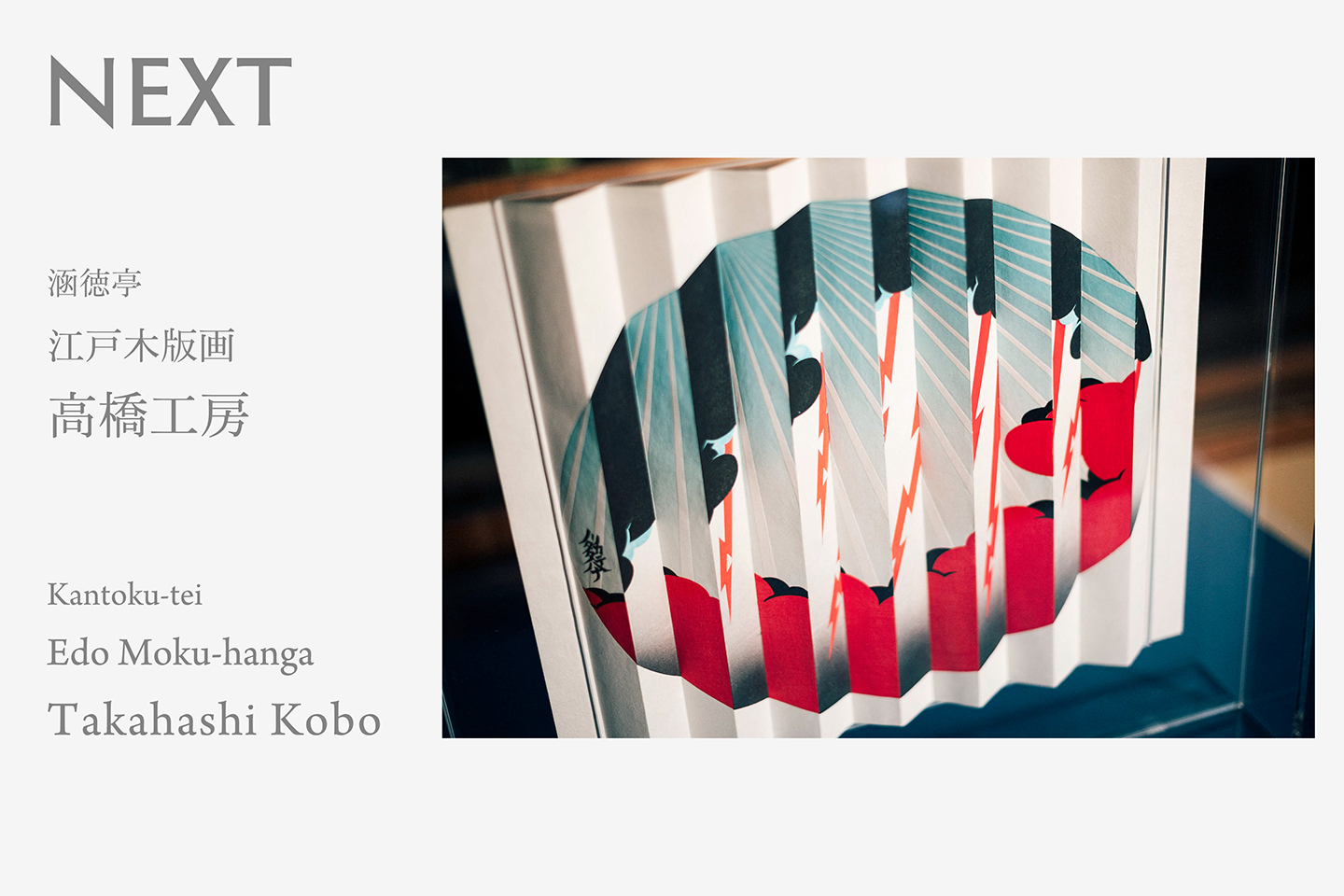
NEXT: 江戸木版画 高橋工房 / Edo Moku-hanga Takahashi Kobo
https://en.edotokyokirari.jp/column/life/edotokyorethink2023-takahashi-kobo/


